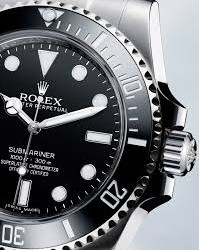If you are a luxury watch enthusiast then you will no doubt be familiar with the term “Officially Certified Chronometer.” But what does it actually mean, who’s in charge of giving this certification?
What is a chronometer?
A chronometer is a high-precision watch capable of displaying seconds and containing a movement that has been tested over several days, in different positions and at different temperatures by an official neutral body (the COSC).
Setting the Standards
The “Contrôle Officiel Suisse des Chronomètres” (or the COSC as it’s more commonly known) is a non-profit organization founded in 1973. It is the Official Swiss Chronometer Testing Institute and was established by five watch-making cantons (Bern, Geneva, Neuchâtel, Solothurn and Vaud) as well as the Federation of the Swiss Watch Industry.
Today, the COSC is the only organization in the world that decides if a given watch qualifies as a chronometer and differs in one important respect from all previous watch testing institutions and observatories; it is strictly non-competitive. There are no points awarded or any prizes given for particular models, nor are there any noted “degrees of success” or honorable mentions given; watches either qualify as chronometers or they do not, with no middle ground between pass and fail.
Becoming a chronometer
To earn chronometer certification a movement must not only be made from the highest-quality components, but also be handled by the finest watchmakers and timers during assembly. The fine regulation and precision of a chronometer watch can be easily destroyed by improper handling, making the finest watchmakers essential to proper chronometer creation.
Testing criteria is based on “ISO 3159” which gives the definition of a wrist-chronometer with spring balance oscillator. Only movements which meet the accuracy criteria established under “ISO 3159” are granted an official chronometer certificate.
Each uncased movement is individually tested for:
* fifteen days
* in five positions
* at three different temperatures.
During testing the movements are fitted with a seconds hand and the automatic winding mechanisms are disconnected for the tests. Measurements are made daily with the aid of cameras. Based on these measurements, seven eliminatory criteria are calculated, the minimal of which must all be met.
The Final Word
To give a bit of perspective on the value of COSC certification over 1 million official chronometer certificates are given each year, which represents only about 3% of the Swiss watch production (that’s out of about 33 million watches). This proportion really highlights the excellent guaranteed quality certified chronometer and definitely makes it an important factor for considering when looking to purchase your next luxury watch.

